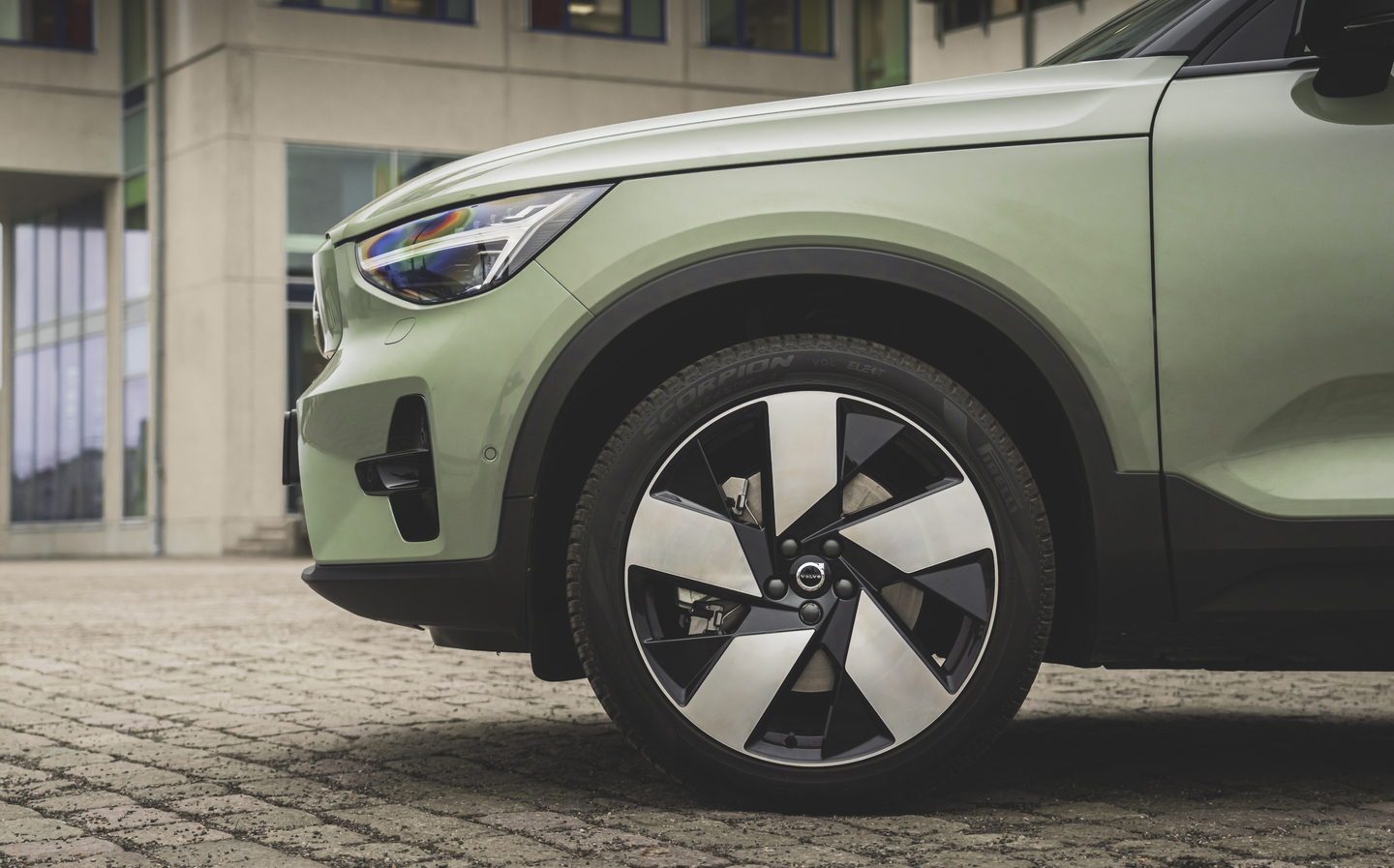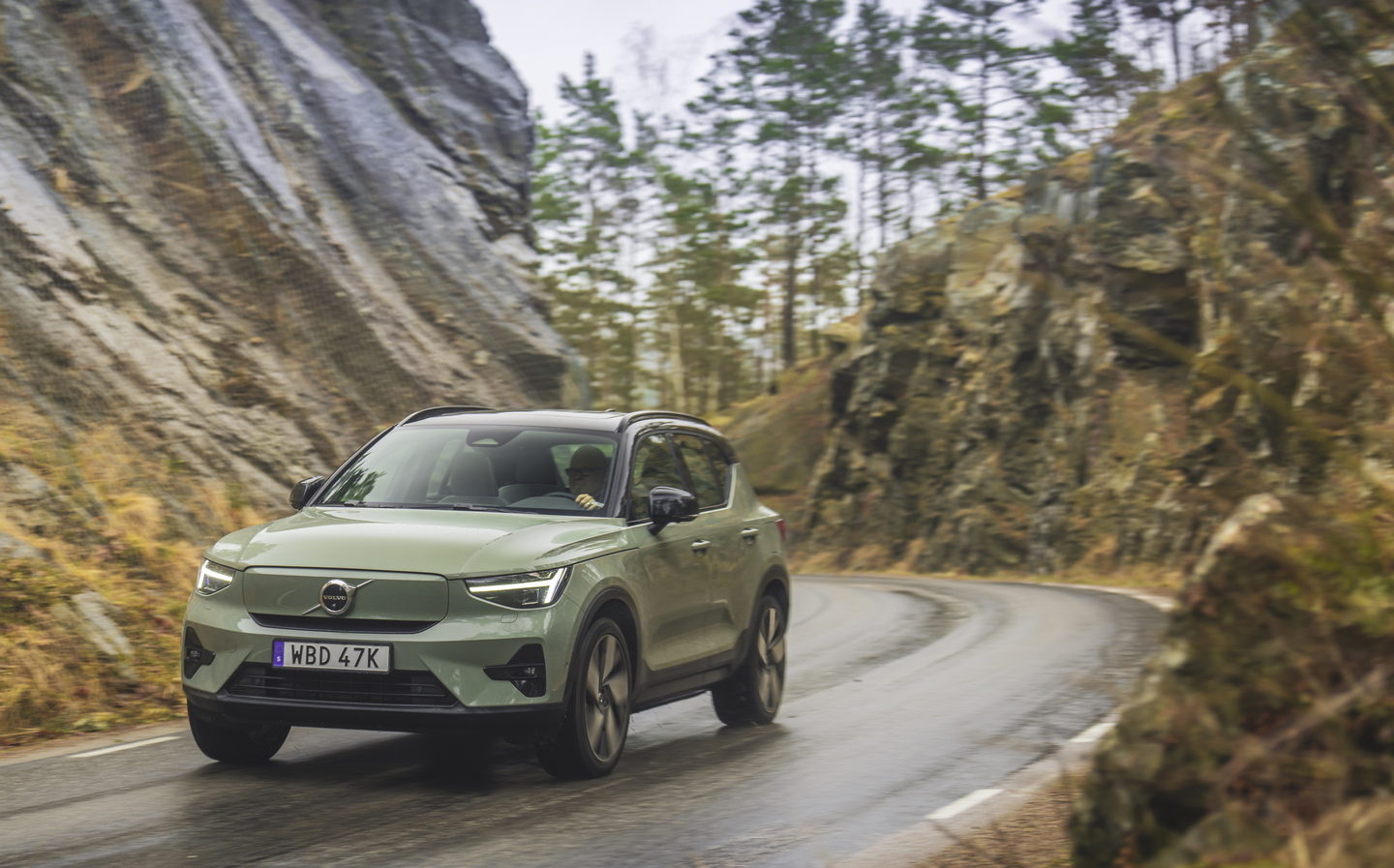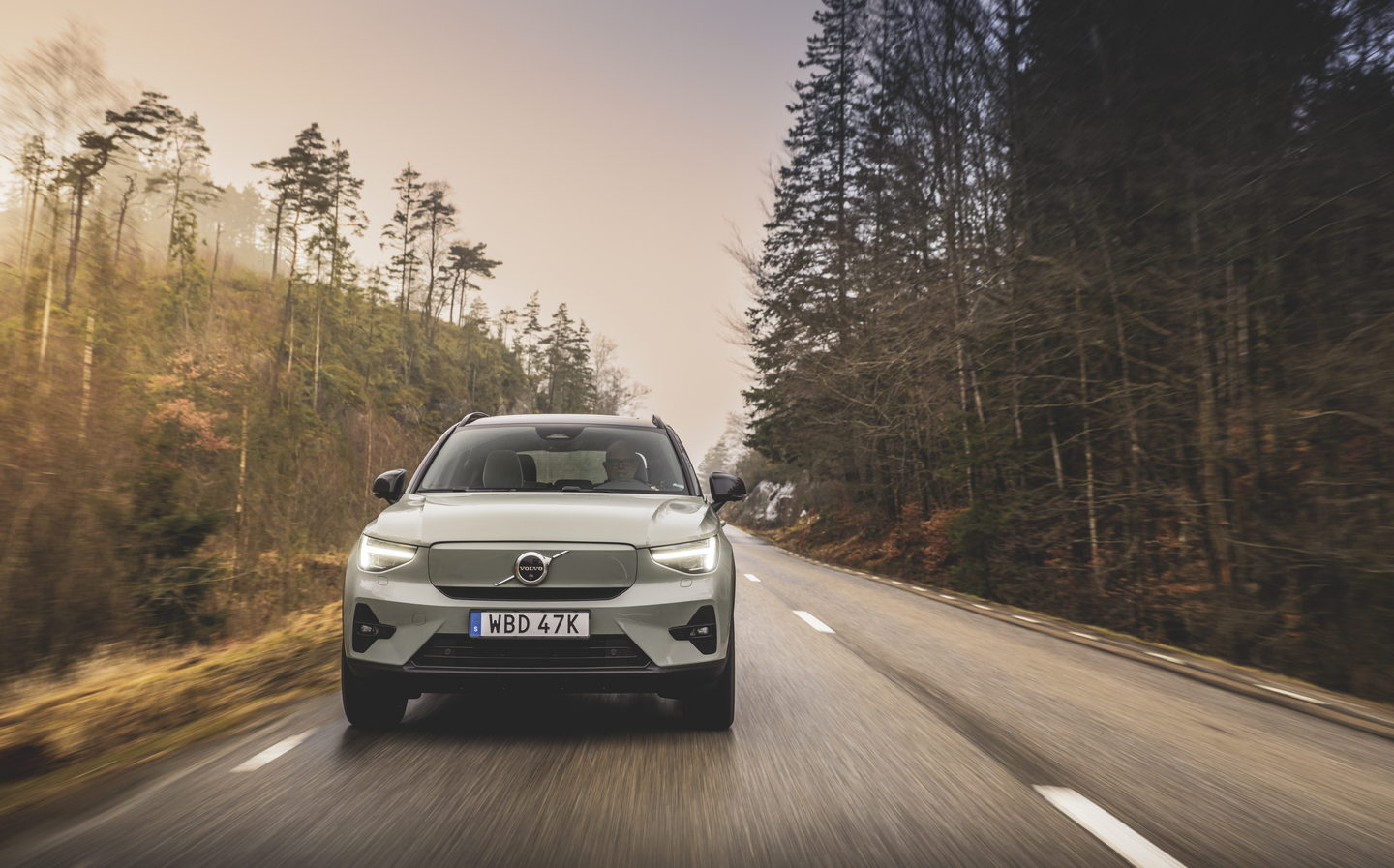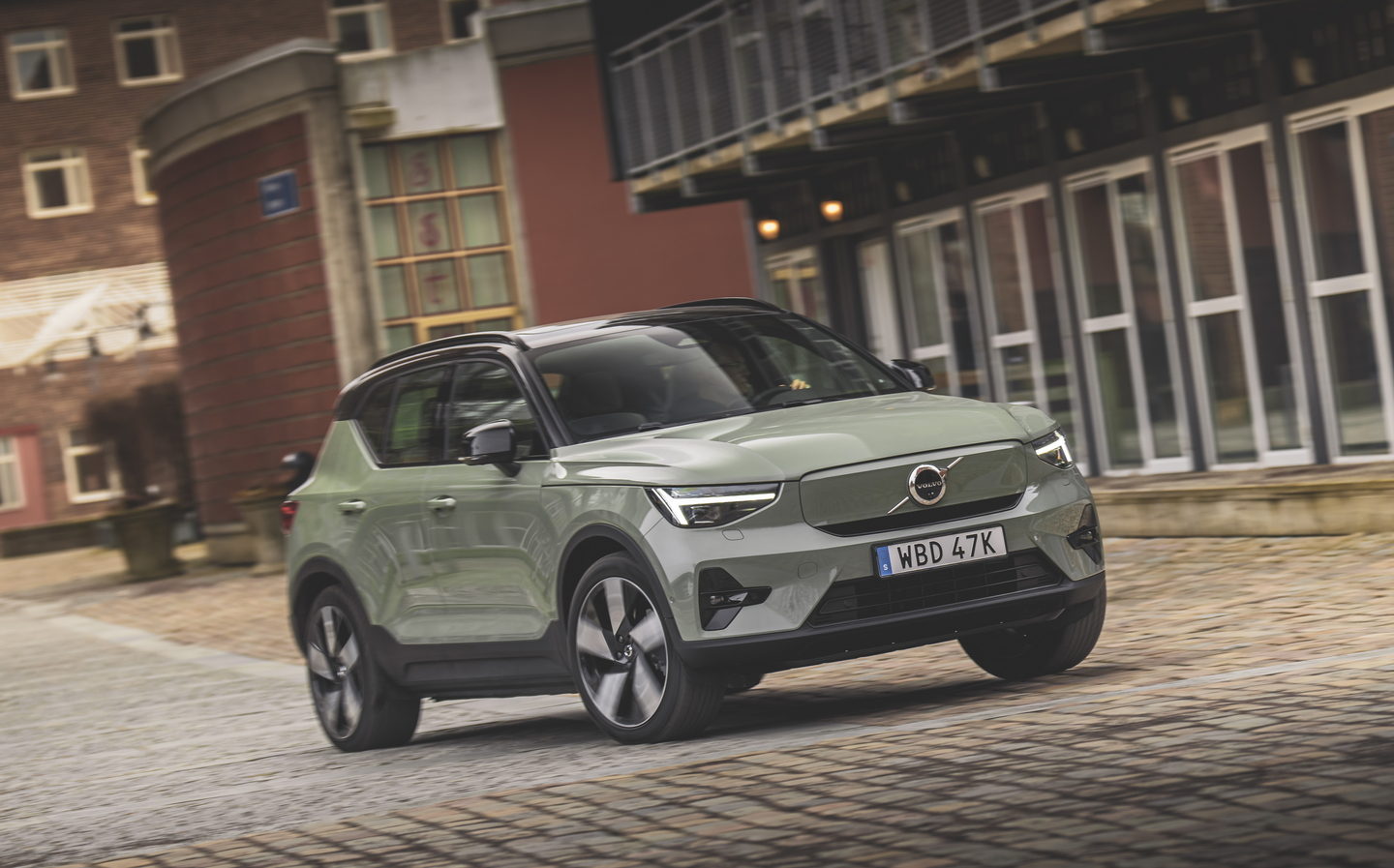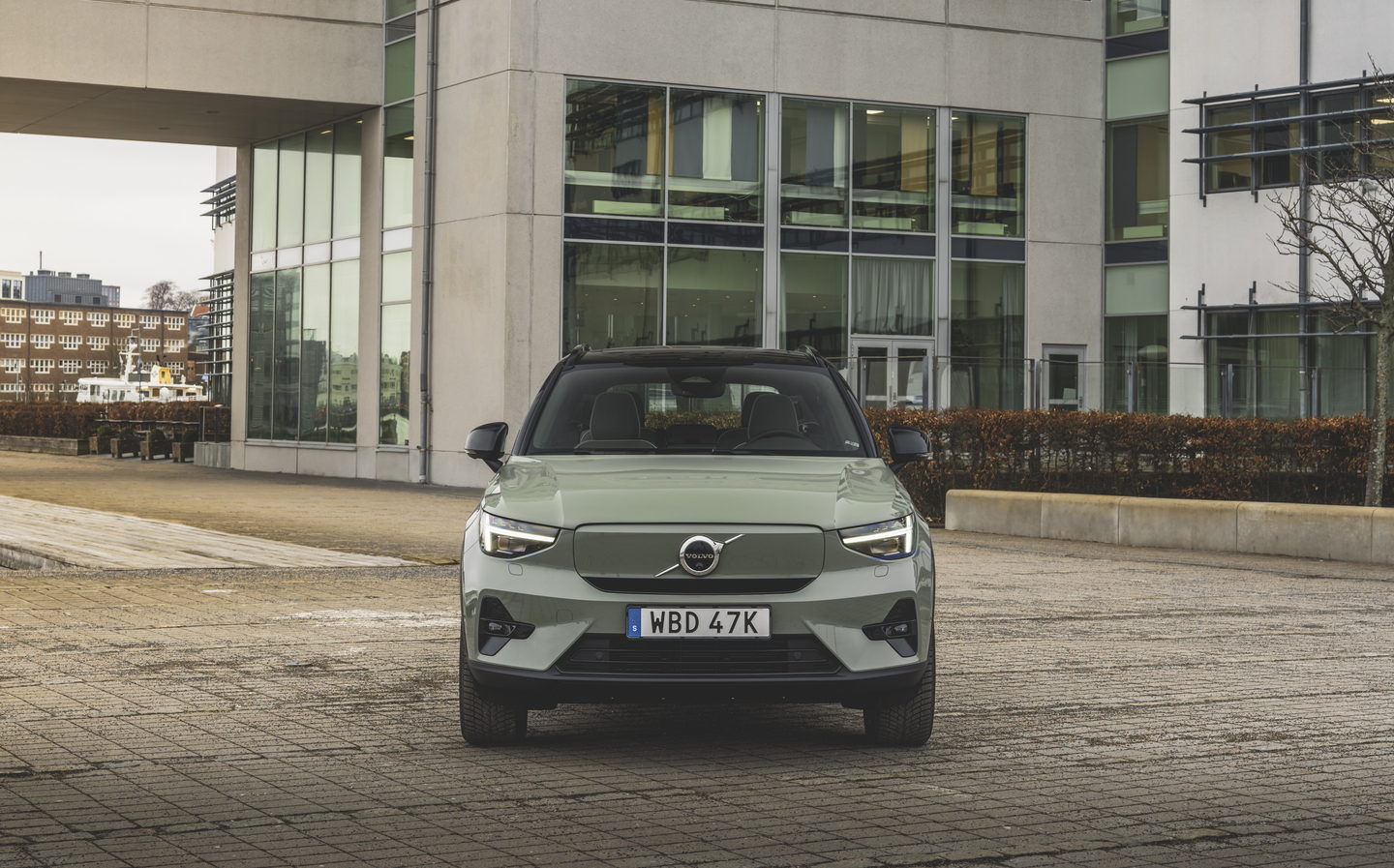Volvo XC40 and C40 Recharge Twin 2023 review: New battery means more miles for electric crossovers
Swedish pairing go further, charge faster
Car makers are increasingly taking a leaf out of the books of tech companies by introducing model updates with greater frequency in an effort to stay ahead of the competition. Volvo is one such company, and it has just released its ‘Lifecycle Update’ for the C40 and XC40 Recharge.
When the XC40 was launched in 2017, buyers could choose from a variety of fuel options, including diesel and petrol plug-in hybrid. Two years later, it became Volvo’s first pure-electric car, and these days it is sold solely as an EV under the Recharge title.
That electric powertrain has come in for an upgrade, resulting in a longer range and increased peak charging speeds, two key metrics for choosing an electric car.
Exterior design and rivals

The Volvo XC40 remains one of the more distinctive SUVs on the market, and it still looks good for a shape that is now six years old. About the cede its role as the smallest model in Volvo’s range to the forthcoming XC30, the XC40 has a blocky, chunky design that features all of the Swedish brand’s characteristics.
In 2021 Volvo expanded its ‘40’ line-up with the C40, a coupé version of the XC40 that introduced a sloping roofline in an attempt to make it look sportier — albeit in a less practical package.


This latest update to the two cars comes with no sheet metal changes; it’s all under the skin. Three equipment grades are available, with the Core and Plus models featuring 19in alloy wheels and Ultimate version sitting on 20in wheels. Most exterior colour options include contrasting black paint for the roof and door mirrors.
Volvo isn’t short of rivals, operating in one of the market’s most popular and competitive segments. Many of these are newer electric models, designed from the outset to be just that, such as the Audi Q4 e-tron, also available as a sloping-roofed variant called the Sportback. The BMW iX1 and Mercedes EQA add to the premium competition, while the Tesla Model Y, Hyundai Ioniq 5 and Kia EV6 are other worthy alternatives.
Interior and practicality

The uncluttered dashboard in the XC40 is very similar to before, with a 12.3in digital instrument display and a vertical 9in infotainment touchscreen flanked by air vents.
On the centre console is a storage area with a wireless charging pad and USB ports that also help support smartphone mirroring if you don’t want to use the native infotainment system. There’s no start button or ‘ignition’ key to turn; press the brake pedal, select drive and go.
Besides the standard heating function, the seats are worth mentioning as they’re remarkably comfortable and supportive. The optional ‘Tailored Wool Blend’ upholstery looks good and adds to the feeling of cosiness inside, while being sustainably sourced and certified. Mid-grade Plus and Ultimate versions also get heated rear seats as standard.

Boot volume in the C40 is 489 litres (measured to the roof), increasing to 1,205 litres versus 578- and 1,328 litres respectively in the XC40. However, more critically, the rear view in the C40 is severely compromised due to the combination of roof design and rear passenger headrests.
Technology and safety
Safety has been a byword for Volvo for decades, and the XC40 is no different. However, it is worth stating that most other manufacturers produce very safe vehicles these days.
Volvo isn’t resting on its laurels, equipping the XC40 with software to aid drivers under its Pilot Assist umbrella. The basis for this is an adaptive cruise control system that maintains a safe distance from the car in front and effectively keeps the car in the centre of its lane while monitoring all other vehicles and road users around the vehicle. Of course, you still have to hold the steering wheel and pay attention, but it does help take some of the strain out of longer journeys.

Other in-car tech includes a Google-based infotainment system on a slick portrait-style touchscreen. It’s not the largest of displays by today’s standards, but it falls within easy reach.
One of its best features is the use of Google Maps for navigation. Besides being the industry standard and user-friendly, it is linked to the car’s onboard computer and can accurately tell you how much battery range it will have when you reach your destination.
If you need to charge along the route, it can help find charging locations and will pre-condition the battery for when you arrive to ensure the shortest charging time.
Performance, range and charging times
In both the C40 and XC40 there is the choice of single- or dual-motor set-ups (two- and four-wheel drive) with two battery sizes.
The smaller 69kWh battery comes only with the single-motor, producing a maximum output of 234bhp, driving the rear wheels and providing a 289-mile range between charges in the XC40 or 296 miles in the C40, thanks to its slipperier aerodynamics.
The coupé in RWD form is slower to accelerate than the dual-motor version, taking 7.3 seconds to reach 62mph from rest — though that’s still plenty fast.

The dual-motor gets a noticeable bump in performance. Maximum power rises to 402bhp, with the second motor on the front axle contributing to more than a 50 per cent increase in instantaneous electric torque (twisting force). That drops the 0-62mph dash to 4.8 seconds and, more practically, means you get drive to all four wheels, which will help off-road.
It also comes with a larger (82kWh) battery. Behave, and you could see a range of up to 333 miles.
One of the benefits of the upgraded battery is a higher peak DC rapid-charging rate of 200kW, meaning that taking the battery from 10 to 80 per cent can be achieved in as little as 28 minutes.
Interestingly, the dual-motor, larger battery XC40 has a slightly better energy consumption figure than the single-motor set-up.
Helping efficiency further is the fitment of a heat pump as standard from mid-tier Plus models up. These take heat from the battery and ambient atmosphere and use it to help warm the cabin, which means less range-sapping from the heating system.
If you’re wondering if they can tow, the answer is yes: towing capacity with the single motor C40 is 750kg unbraked and 1,500kg with a braked trailer, while or the dual-motor Recharge Twin, the braked towing capacity increases to 1,800kg. However, expect range to drop massively when pulling large masses.
Ride and handling
Driving the dual-motor XC40 initially leaves you questioning why a company so obsessed with safety would put so much performance into a vehicle of this size. For most, the reality is that, save for the occasional quick overtake, you rarely need to use all of the power at your disposal.
Suffice to say, the XC40 never feels troubled or strained when driving in normal conditions.

In traffic and around urban areas the strong energy recuperation provides a consistent one-pedal driving feel that is easy to get used to. This set-up uses the electric motors as generators when slowing down, to recover energy back to the battery, and reduces how much you have to use the brake pedal (and therefore wear on the brake pads/ discs).
There is a mildly firm ride in the XC40, akin to how BMW sets up its cars, though this gives the driver plenty of confidence at higher speeds, making it surefooted. With so much of the car’s weight set low down, it corners without much body roll, and with the all-wheel-drive Recharge Twin, grip and traction are in ample supply.
Volvo also equips both models with all-season tyres. These work better in winter and poorer weather conditions, but they add slightly more road noise at higher speeds. To be fair to the XC40, the road noise is only noticeable due to how silent the rest of the car is and how well-assembled it appears to be, with no hint of squeaks or rattles throughout the cabin.

Pricing and on-sale date
Buyers can order the updated models now. The Volvo XC40 Recharge (single motor) kicks off the range at £46,505 for the Core model. Upgrading to the mid-level Plus spec adds more standard equipment and shifts the price to £52,555, while the Ultimate trim grade costs from £56,605.
The same powertrain in the C40 commands a premium, with prices ranging from £48,355 to £57,555. Similarly, there is a price jump to move up to the Recharge Twin, which adds the larger battery and extra motor. In this guise, the XC40 starts at £51,755, rising to £61,855, and on the C40 side, prices range from £53,605 to £62,805.
Verdict: Volvo XC40 Recharge Twin review

Few will notice the changes applied to the XC40 and C40. Still, they are welcome additions, especially with the larger battery gaining that bit more range and faster charging speeds — two things no electric car owner is likely to turn down.
A polished driving experience paired with solid build quality, and hefty performance in the case of the Recharge Twin, gives it every right to compete against the premium German brands’ offerings.
Related articles
- After reading this review of the Volvo XC40, you might want to read about the Hyundai Ioniq 6
- Looking for other options to go electric? Here are the top 10 longest-range electric cars
- Read how the EX90 aims to be the safest Volvo yet
Latest articles
- F1 2025 calendar and race reports: The new Formula One season as it happens
- Seven great automotive events to visit this summer, from F1 to art and champagne
- Watch new Porsche 911 GT3 smash Nürburgring record for manual cars
- Skoda Elroq 2025 review: Czech carmaker can’t seem to miss with its electric family cars
- Five best electric cars to buy in 2025
- Should I buy a diesel car in 2025?
- Zeekr 7X AWD 2025 review: A fast, spacious and high tech premium SUV — but someone call the chassis chief
- Denza Z9GT 2025 review: Flawed but sleek 1,062bhp shooting brake from BYD’s luxury arm
- Extended test: 2024 Renault Scenic E-Tech review





